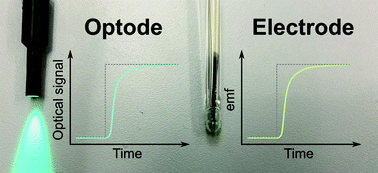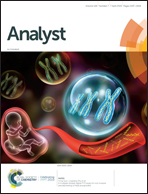A unified approach for investigating chemosensor properties – dynamic characteristics†
Abstract
Chemosensors are a group of sensors—responsive sensor chemistry, sensor hardware, and software—that report on the composition of solutions and gaseous samples. Dynamic properties are fundamental for all sensor characterization. While electrochemical chemosensors have seen a century of research and are well-described, research on chemosensors using other modes of transductions are still at an early stage. The dynamic properties of chemosensors—independent of their mode of transduction—are not reported consistently in the literature. This makes it impossible to compare sensor performance of chemosensors from different manufacturers and laboratories. To remedy this, standardized experimental methods that exclude the influence of drift and any dependence on activity step change must be used. Subsequently, the resulting data must be treated using a unifying analysis formalism, and robust values must be used to describe chemosensor characteristics. Characterizing the sensor properties in turn enables rationalizing the link between sensor performance and sensor chemistry. Following a review of sensor theory, a thorough discussion of experimental methods and data analysis models for determining dynamic sensor properties, we arrive at evidence-based recommendations for good practice when describing new chemosensors. Adhering to these recommendations, sensor performance can be compared between laboratories, and information on the sensor chemistry may be revealed in the data analysis. This topic is particularly relevant in the rapidly maturing field of optical chemosensors.

- This article is part of the themed collections: Recent Review Articles and Bioanalytical Sensors


 Please wait while we load your content...
Please wait while we load your content...